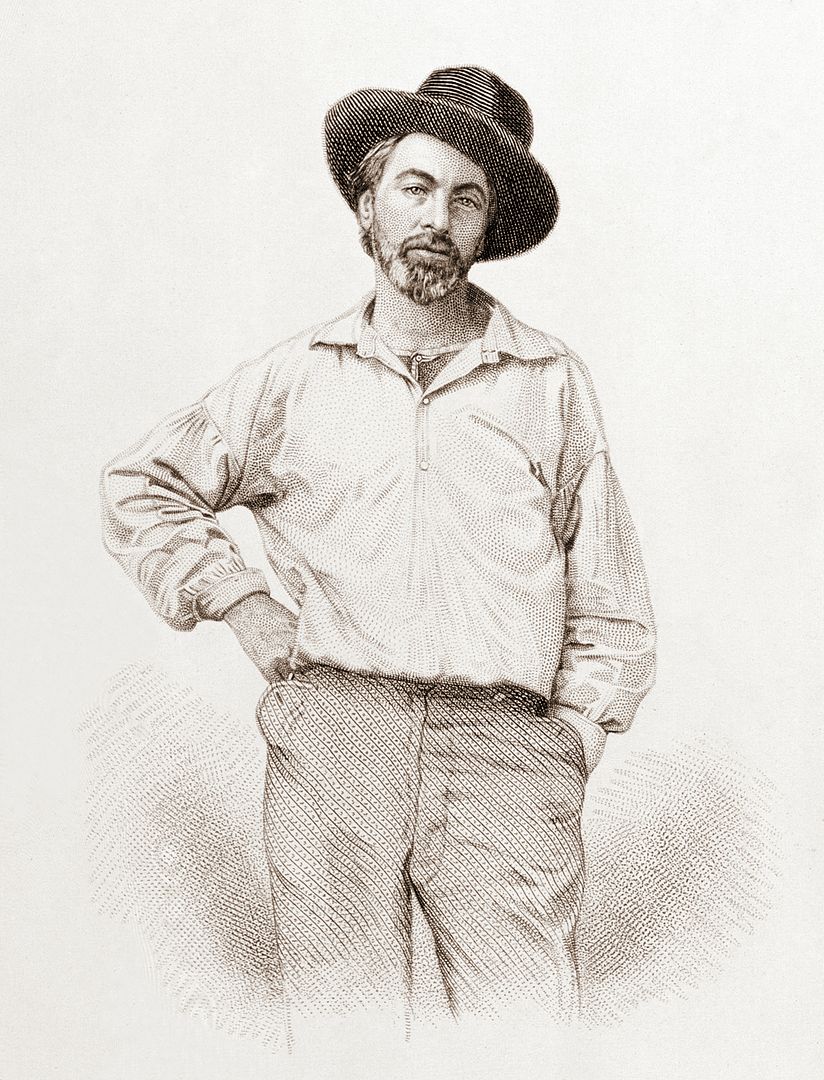|

August 31, 2020
#331
Thank you,
Barbara Schock, for sharing your extraordinary gift of these vignettes of Galesburg &
19th century American history.

Steel engraving of Walt Whitman, age 37, serving as
the frontispiece to Leaves of Grass published in
1855. |
Walt Whitman, Poet By Barbara
Schock
While attending Lombard College Carl Sandburg
completed twelve English courses. One of the textbooks was A STUDY OF ENGLISH
PROSE WRITERS by J. Scott Clark of Northwestern University. The book was 879
pages long and included twenty-one British writers and five American writers.
Frank H. Fowler was the professor teaching those courses.
The American writers included Washington Irving,
Nathaniel Hawthorne, Ralph Waldo Emerson, James Russell Lowell and Oliver
Wendell Holmes. Sandburg and his friends took pleasure in memorizing and
reciting poems they liked and in which they found meaning. Some of the boys
recited lines from the poems hoping to impress their girls. It didn’t always
work as intended.
During this time Sandburg bought a second-hand copy of
LEAVES OF GRASS by Walt Whitman (1819-1892). He was an American poet born on
Long Island near New York City. He had left school at the age of eleven or
twelve and got a job in a printing office. For the next few years he held jobs
at various newspapers writing and observing people. He wanted to understand
himself as well as other people. Since his education was limited he wanted to
understand the world around him and the individuals in it. Working for
newspapers gave him the opportunity to write about and observe people at the
same time.
Whitman’s method of writing poetry was quite different
from poets in the past. His lines didn’t rhyme and they were of different
lengths. He published LEAVES OF GRASS for the first time in 1855. There were
eight more editions by the time he died. He had spent a lifetime writing, adding
to and re-writing a book of his observations of people and life.
During the time around the turn of the twentieth century
Sandburg was trying to find his way as a writer. He spent some time in New
Jersey. He supported himself by selling stereoscopic views door-to-door. He
visited the home and tomb of Walt Whitman in Camden, New Jersey.
Later Sandburg attempted to enter the lecture field as
Chautauqua lectures were vary popular in rural areas during the summertime. He
called his oration “An American Vagabond.” He was speaking about Walt Whitman,
but he may have been speaking of himself as well.
He worked on the speech, off and on, for about three
years. He presented it in Joliet and Rockford and was paid $25 each time. He
also gave the talk in Green Bay, Wisconsin, for $40. His evaluation of the
effort was that he should not have memorized the lecture. It would have been
more interesting for the audience if he had gotten clear in his mind the various
aspects of Whitman’s life and works that he could pull from memory and talk
about in a natural way.
This is how Carl Sandburg summed up his feelings about
studying English literature: “In the Illinois Corn Belt, in a classroom looking
out on cow pastures and farm wagons hauling hogs, hay, tomatoes, turnips, we
could get the feel and the smells and noises of London a hundred years before.
We were learning that books and writers can cross oceans carrying the heart’s
blood of men who write.”
He went on to convey his thoughts about living in America
in the twentieth century in a similar way.
|
